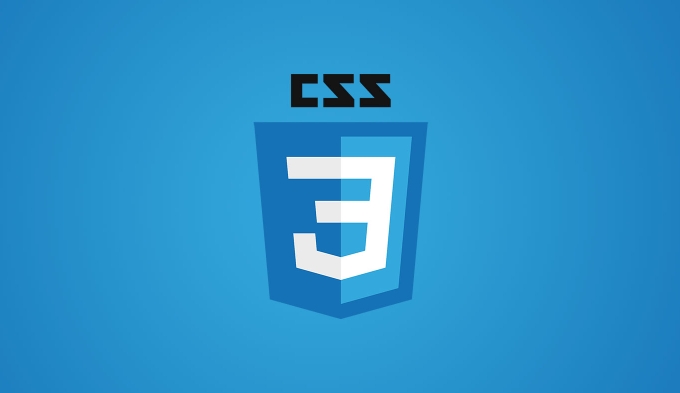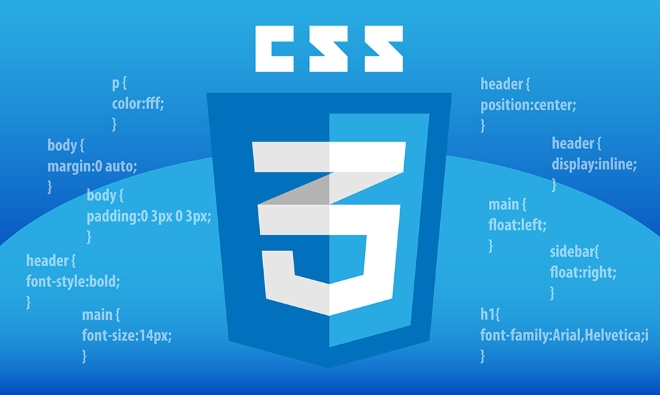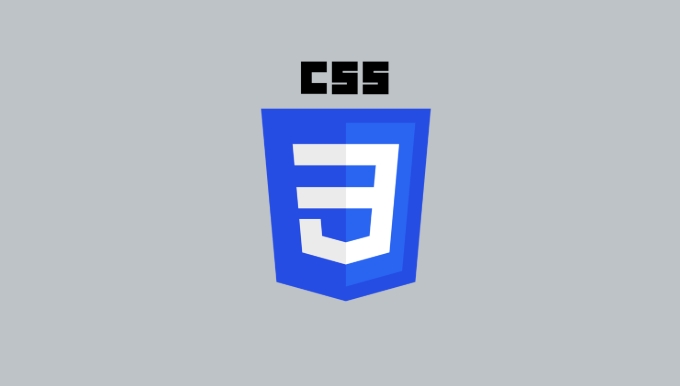How to override inherited styles in CSS?
Jul 16, 2025 am 01:47 AMTo override inherited CSS styles, the core approach is to increase the priority of custom styles. 1. You can add!important after the attribute (use with caution, only if necessary). 2. Improve selector specificity, such as using ID or adding class names. 3. Adjust the load order of the style sheet and place the custom styles at the end to introduce. 4. Use inline styles (non-regular use is not recommended), which have extremely high priority but are difficult to maintain. Using these techniques rationally can effectively resolve style conflict problems.

Sometimes when you write web page styles, you will find that you clearly wrote CSS, but the style just doesn't take effect. This is most likely because some styles are inherited from the parent element or are overwritten by other more specific rules. So how can we truly "cover" these inherited styles?

In fact, the core is one point: increase the priority of the style you write . The following methods can help you solve this problem.
1. Use !important (use with caution)
The most direct way is to add !important to your CSS attribute, so that the browser will use this value first and ignore other conflicting rules.

.child {
color: red !important;
}??Note : Although it is easy to use, it is abused
!importantwill make the style more and more difficult to maintain. It is recommended to use only if other codes are really not modified.
2. Improve the specificity of the selector
CSS determines which rule takes effect based on the specificity of the selector. for example:

- Element selectors (such as
div) have a lower weight - Class selectors (such as
.my-class) are higher - The ID selector (such as
#my-id) has the highest weight
You can increase the priority by adding class names or using IDs:
.parent .child {
color: blue;
}If this is still overwritten, you can change it to:
#main .child {
color: green;
}Or add one more class:
.child.override-style {
color: green;
}Then write it on HTML:
<div class="child override-style"></div>
3. Change the loading order of style sheets
If you have two CSS files, the browser will load the one in the future (provided that the selector priority is the same). So you can put custom styles at the end to introduce:
<link rel="stylesheet" href="reset.css"> <link rel="stylesheet" href="style.css"> <!-- The style in this file will overwrite the previous one -->
This trick is especially useful when debugging or using third-party component libraries.
4. Use inline styles (non-recommended)
You can also write the style attribute directly in HTML:
<div style="color: purple;">Text</div>
This writing method has high priority and can almost cover external styles. But the disadvantages are also obvious: it is difficult to maintain, is not conducive to reuse, and is generally only used in JS dynamic control styles.
Overall, the key to overwriting inheritance styles is to understand the priority mechanism of CSS. You can first try to adjust the structure and loading order of the selector. If it really doesn't work, then consider the !important or inline style. Basically, that's not complicated, but it's easy to have problems with hierarchical relationships in actual projects, so it's important to maintain a clear structure.
The above is the detailed content of How to override inherited styles in CSS?. For more information, please follow other related articles on the PHP Chinese website!

Hot AI Tools

Undress AI Tool
Undress images for free

Undresser.AI Undress
AI-powered app for creating realistic nude photos

AI Clothes Remover
Online AI tool for removing clothes from photos.

Clothoff.io
AI clothes remover

Video Face Swap
Swap faces in any video effortlessly with our completely free AI face swap tool!

Hot Article

Hot Tools

Notepad++7.3.1
Easy-to-use and free code editor

SublimeText3 Chinese version
Chinese version, very easy to use

Zend Studio 13.0.1
Powerful PHP integrated development environment

Dreamweaver CS6
Visual web development tools

SublimeText3 Mac version
God-level code editing software (SublimeText3)

Hot Topics
 What is 'render-blocking CSS'?
Jun 24, 2025 am 12:42 AM
What is 'render-blocking CSS'?
Jun 24, 2025 am 12:42 AM
CSS blocks page rendering because browsers view inline and external CSS as key resources by default, especially with imported stylesheets, header large amounts of inline CSS, and unoptimized media query styles. 1. Extract critical CSS and embed it into HTML; 2. Delay loading non-critical CSS through JavaScript; 3. Use media attributes to optimize loading such as print styles; 4. Compress and merge CSS to reduce requests. It is recommended to use tools to extract key CSS, combine rel="preload" asynchronous loading, and use media delayed loading reasonably to avoid excessive splitting and complex script control.
 What is Autoprefixer and how does it work?
Jul 02, 2025 am 01:15 AM
What is Autoprefixer and how does it work?
Jul 02, 2025 am 01:15 AM
Autoprefixer is a tool that automatically adds vendor prefixes to CSS attributes based on the target browser scope. 1. It solves the problem of manually maintaining prefixes with errors; 2. Work through the PostCSS plug-in form, parse CSS, analyze attributes that need to be prefixed, and generate code according to configuration; 3. The usage steps include installing plug-ins, setting browserslist, and enabling them in the build process; 4. Notes include not manually adding prefixes, keeping configuration updates, prefixes not all attributes, and it is recommended to use them with the preprocessor.
 How can you animate an SVG with CSS?
Jun 30, 2025 am 02:06 AM
How can you animate an SVG with CSS?
Jun 30, 2025 am 02:06 AM
AnimatingSVGwithCSSispossibleusingkeyframesforbasicanimationsandtransitionsforinteractiveeffects.1.Use@keyframestodefineanimationstagesforpropertieslikescale,opacity,andcolor.2.ApplytheanimationtoSVGelementssuchas,,orviaCSSclasses.3.Forhoverorstate-b
 What is the conic-gradient() function?
Jul 01, 2025 am 01:16 AM
What is the conic-gradient() function?
Jul 01, 2025 am 01:16 AM
Theconic-gradient()functioninCSScreatescirculargradientsthatrotatecolorstopsaroundacentralpoint.1.Itisidealforpiecharts,progressindicators,colorwheels,anddecorativebackgrounds.2.Itworksbydefiningcolorstopsatspecificangles,optionallystartingfromadefin
 What is the scope of a CSS Custom Property?
Jun 25, 2025 am 12:16 AM
What is the scope of a CSS Custom Property?
Jun 25, 2025 am 12:16 AM
The scope of CSS custom properties depends on the context of their declaration, global variables are usually defined in :root, while local variables are defined within a specific selector for componentization and isolation of styles. For example, variables defined in the .card class are only available for elements that match the class and their children. Best practices include: 1. Use: root to define global variables such as topic color; 2. Define local variables inside the component to implement encapsulation; 3. Avoid repeatedly declaring the same variable; 4. Pay attention to the coverage problems that may be caused by selector specificity. Additionally, CSS variables are case sensitive and should be defined before use to avoid errors. If the variable is undefined or the reference fails, the fallback value or default value initial will be used. Debug can be done through the browser developer
 CSS tutorial focusing on mobile-first design
Jul 02, 2025 am 12:52 AM
CSS tutorial focusing on mobile-first design
Jul 02, 2025 am 12:52 AM
Mobile-firstCSSdesignrequiressettingtheviewportmetatag,usingrelativeunits,stylingfromsmallscreensup,optimizingtypographyandtouchtargets.First,addtocontrolscaling.Second,use%,em,orreminsteadofpixelsforflexiblelayouts.Third,writebasestylesformobile,the
 CSS tutorial for creating loading spinners and animations
Jul 07, 2025 am 12:07 AM
CSS tutorial for creating loading spinners and animations
Jul 07, 2025 am 12:07 AM
There are three ways to create a CSS loading rotator: 1. Use the basic rotator of borders to achieve simple animation through HTML and CSS; 2. Use a custom rotator of multiple points to achieve the jump effect through different delay times; 3. Add a rotator in the button and switch classes through JavaScript to display the loading status. Each approach emphasizes the importance of design details such as color, size, accessibility and performance optimization to enhance the user experience.
 What are the three ways to insert CSS into a webpage?
Jun 24, 2025 am 12:36 AM
What are the three ways to insert CSS into a webpage?
Jun 24, 2025 am 12:36 AM
There are three ways to insert web pages in CSS: 1. Inline styles are suitable for single element modification or debugging, but are not conducive to maintenance and reuse; 2. Internal style sheets are suitable for small projects or test pages, and the current page style is unified but cannot be shared across pages; 3. External style sheets are most recommended, suitable for multi-page projects, centrally manage styles, improve maintenance and loading speed. In actual development, external style sheets are preferred, and the other two methods are considered in special circumstances.






